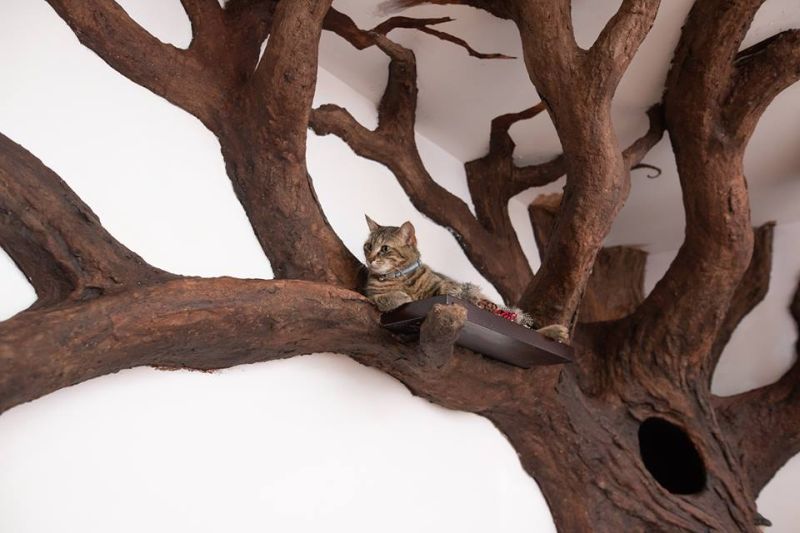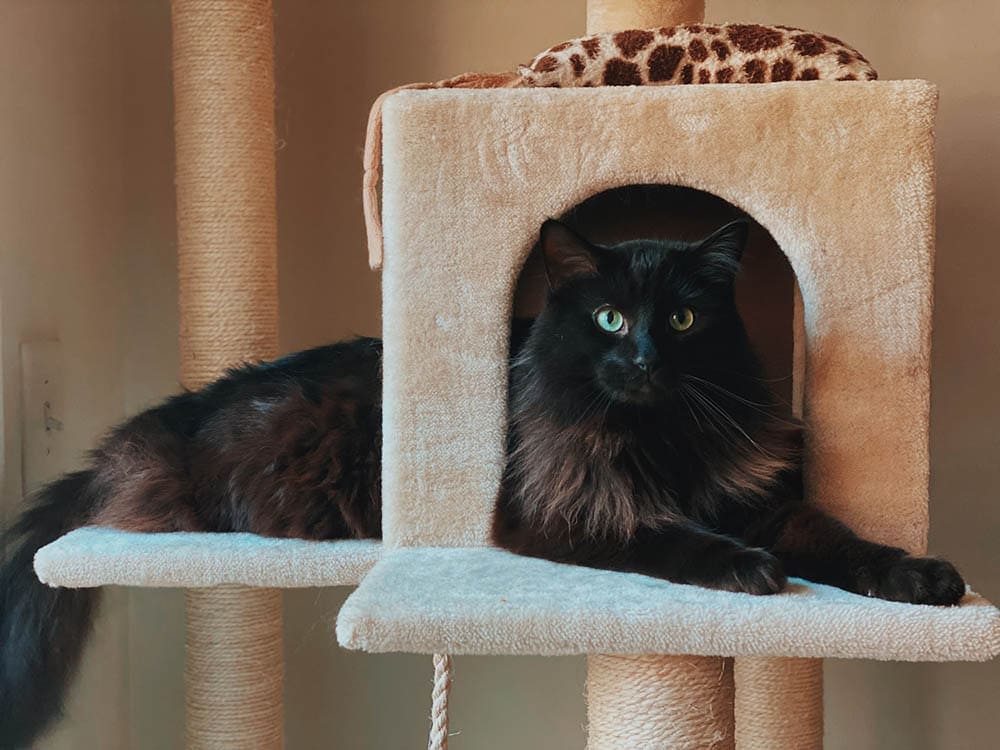How to Choose a Cat Tree
by Admin
Posted on 17-10-2023 04:38 PM

Consider your cat’s age and ability. Do you have a kitten or a senior cat? a simple tree may be more appropriate for your senior cat who spends more time lounging. A kitten who has more curiosity needs a more elaborate setup or even multiple
trees
around your house. Assess your space. Cat trees may be small or elaborate.
 If you have space for a larger tree, the investment will be worth it for your pet. Kittens will build habits early and grow up to become larger cats who seek more space. Think about your cat’s likes. Do you notice any particular materials that your cat is drawn to, like rope or cardboard? is your pet more apt to claw or climb? choose a cat tree designed to fulfill their specific needs.
If you have space for a larger tree, the investment will be worth it for your pet. Kittens will build habits early and grow up to become larger cats who seek more space. Think about your cat’s likes. Do you notice any particular materials that your cat is drawn to, like rope or cardboard? is your pet more apt to claw or climb? choose a cat tree designed to fulfill their specific needs.
Cats spend the majority of the day sleeping , and while they can fall asleep more or less anywhere, it's good to give them a few places to choose from, be it on a cosy cat blanket on the windowsill or in their own comfy cat bed. As we've already established, cats feel most comfortable when they are up high, so if you can it's a great idea to provide them with a sleeping spot above ground. The freestyle cat climbing tree can be accessorized with either a super comfy hammock or a secluded felt den where they can curl up.
When shopping for a cat tree, keep your cat’s size and personality in mind. If you have a large cat, don’t choose a tree with small, flat perches or he’ll be hanging over the perch – and that can leave him feeling very vulnerable to attack. Choose a tree with perches that are an appropriate size. Perches that are in a “u” shape are great because the cat can rest his back against the side. Cats often feel more secure when they have their backs against something because they feel less vulnerable from a blind ambush. Buy pam’s books there are many cat trees on the market.
How Cat Trees Work
Cats love to have their own space to sleep away the day while their owners are busy at work making money to buy them new toys. Structures known as ‘cat trees’ come in various sizes and shapes and are great additions to your home to keep your furry feline happy.
 Cats love to be up high where they have a great view of everything going on in the home. Most cat trees have high perches where your cat can curl up, feel safe and get away from that horrible dog! having the structure near a window also gives them a great nature channel to watch while home alone.
Cats love to be up high where they have a great view of everything going on in the home. Most cat trees have high perches where your cat can curl up, feel safe and get away from that horrible dog! having the structure near a window also gives them a great nature channel to watch while home alone.
Cat trees may seem bulky, but did you know that they are key to prevent unwanted behavior in cats? here’s how that works. Est. Read time: 3 min. Url copied.
The first thing to work out is whether your cat likes scratching horizontal or vertical rope (or both!) we mentioned that cats use scratch to stretch, so another important facet is to consider a post that’s tall enough for your cat- a safe guideline is to have at least 90 cm (or 35 inches). Strong climbers like the abyssinian will prefer a very tall cat tree if your house can support it. A post should also have a wide base to avoid toppling over. Wobbly trees are dangerous. Cats may prefer different materials, but most tend to enjoy sisal fabric or tightly wound sisal rope.
How to Choose the Right Cat Tree
The maine coon is a large and majestic breed of cat known for its playful and social personality. These cats are often quite active and enjoy exploring and climbing, which makes them well-suited to life with a cat tree. However, not all cat trees are created equal, and it’s important to choose one that will be sturdy and large enough to accommodate a maine coon’s size and energy level. When looking for a cat tree for a maine coon , there are a few key things to consider. First and foremost, the tree should be sturdy and well-made. Maine coons can weigh up to 18 pounds or more, and they can be quite active, so it’s important to choose a cat tree that won’t tip over or break under their weight.
When shopping for a cat tree, keep your cat’s size and personality in mind. If you have a large cat, don’t choose a tree with small, flat perches. The cat has to feel comfortable on the perch and not be worried about a leg hanging over the side. Choose a tree with perches that are an appropriate size for your cat. Large cats need large perches. As for the type of perches to look for, my recommendation is “u” shaped ones because they allow the cat to feel the perch against his back. Cats like to back up against things when resting because it helps them feel more secure and lest vulnerable to a rear ambush.
You can use any number of materials to build your cat tree: real tree limbs, dimensional lumber from the hardware store, or even cardboard. The most important things to consider are stability and using materials that won't harm your cat. For example, if you plan to paint or stain dimensional lumber, be sure to choose nontoxic coatings because your cat will scratch those surfaces and potentially create flakes that might be ingested. While pressure-treated lumber might be important for building outdoors, its weather- and pest-resistent qualities aren't needed inside; so you can forego wood that's been treated with those additives.
Condos or scratchers? hammocks or ramps? cat trees come in about as many varieties as, well, actual trees. So how do you pick the best cat tree? does your kitty really need one? yes, says irith bloom, cat and dog trainer and certified behavior consultant with the sophisticated dog in los angeles, california. Cats instinctively gravitate to high perches “to see more, because they predators,” she says. “however, they are also prey animals who feel vulnerable on the ground, and may be more comfortable up high, even if there isn’t an immediate threat. ”cat trees also give your cat a space that is completely their own.
“all cats need access to important environmental resources, including food, water, litter boxes, rest and sleep areas, and elevated areas or perches,” like those cat trees provide, says michelle meyer, dvm, a veterinarian and president of the american association of feline practitioners. “these are known as the five pillars of a healthy feline environment. Meeting your cat’s environmental needs can help to avoid stressors that could initiate unwanted behavioral or medical consequences. ”while experts say it’s possible to create an environment that will provide all of a cat’s needs without buying a cat tree, they are a convenient way to check a lot of boxes with a single product.
Some cats won't use the cat tree right away. If this is the case, try putting some catnip on it or spraying it with feliway (the synthetic cat pheromone we mentioned earlier). Try to reinforce the behavior when it happens. If your cat is familiar with clicker training, when you see your cat near or on the cat tree, click and reward for using it. You can also try placing your cat's food near or on the cat tree to entice them to check it out. Once they have spread their pheromones on it they'll be using it all the time!.